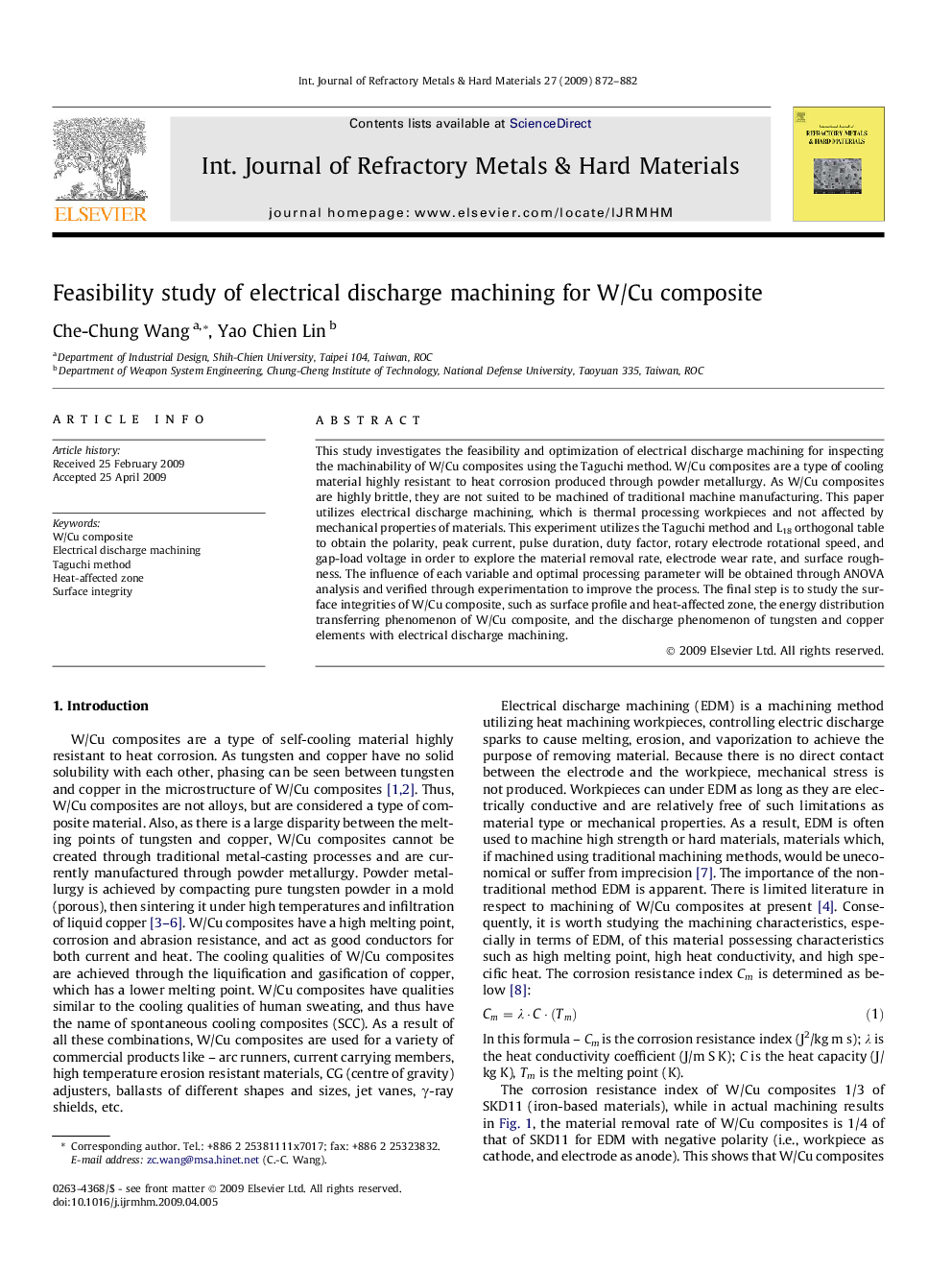| Article ID | Journal | Published Year | Pages | File Type |
|---|---|---|---|---|
| 1604214 | International Journal of Refractory Metals and Hard Materials | 2009 | 11 Pages |
This study investigates the feasibility and optimization of electrical discharge machining for inspecting the machinability of W/Cu composites using the Taguchi method. W/Cu composites are a type of cooling material highly resistant to heat corrosion produced through powder metallurgy. As W/Cu composites are highly brittle, they are not suited to be machined of traditional machine manufacturing. This paper utilizes electrical discharge machining, which is thermal processing workpieces and not affected by mechanical properties of materials. This experiment utilizes the Taguchi method and L18 orthogonal table to obtain the polarity, peak current, pulse duration, duty factor, rotary electrode rotational speed, and gap-load voltage in order to explore the material removal rate, electrode wear rate, and surface roughness. The influence of each variable and optimal processing parameter will be obtained through ANOVA analysis and verified through experimentation to improve the process. The final step is to study the surface integrities of W/Cu composite, such as surface profile and heat-affected zone, the energy distribution transferring phenomenon of W/Cu composite, and the discharge phenomenon of tungsten and copper elements with electrical discharge machining.
